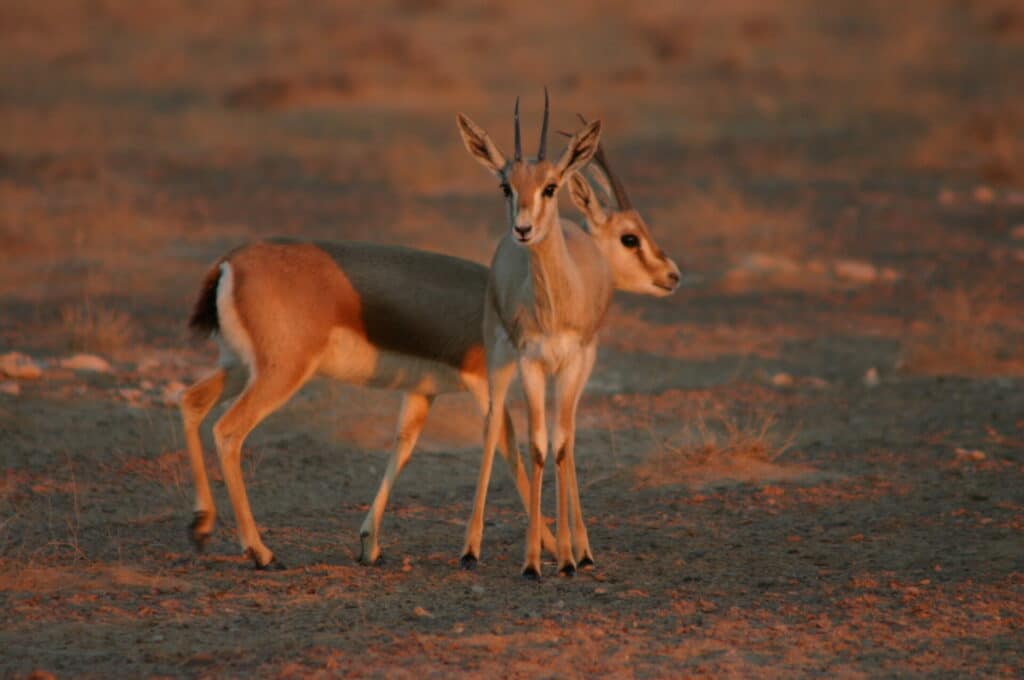Finding slender-horned gazelles in the Tunisian Sahara Desert
December 1, 2022
December 1, 2022

Most of the remaining wild population of the Endangered North African slender-horned gazelle Gazella leptoceros inhabits the vast wilderness of the Grand Erg Oriental, the Great Eastern Sand Sea of the Sahara Desert. It is superbly adapted to the harsh desert conditions but threatened with extinction with the remnant wild population declining to just 300-600 adults. Hunting has been the most persistent threat to the species, and this continues across its remaining range despite the inaccessibility of its habitat.
Its remote home renders the gazelle difficult to find in the extensive sand dunes between Algeria and Tunisia, and this is the challenge that our team of ecologists in Tunisia had to grapple with when trying to determine if slender-horned gazelles persisted in the area. The terrain itself is extremely difficult to traverse, added to this are restricted access zones close to the border with Algeria and a tightly controlled military area in the south of the country. Our team decided on a dual approach with an initial aerial survey in the far south followed by ground transects in the northern part of their habitat the following year.
Despite the large area covered by the aerial survey, no gazelles were spotted, although signs and tracks were observed. The ground survey in the northern part revealed more conclusive results with observations of one pair and fresh tracks of one group of three and another group of four individuals. Our results confirmed the presence of a slender-horned gazelle population in Tunisia, but it is apparent that the species is in trouble and immediate action is needed to halt its decline. Our Tunisia programme manager, Marie Petretto, added “Whilst it was heartening to find evidence that slender-horned gazelle populations remained in Tunisia, the number of vehicle tracks was a concern and indicates that the remnant wild population remains under pressure and is in need of urgent help.”
The Tunisian authorities recognise the plight of the slender-horned gazelle and have established two breeding centres within two different protected areas to provide a vital safety net for the species in the country. The IUCN SSC Antelope Specialist Group, whose programme office is hosted by Marwell Wildlife, have also produced a conservation strategy 2020-2029 to guide actions to conserve and restore populations and aid the development of National Action Plans. If conservation action follows, there is still hope for the species in the wild.
For further information, please visit https://doi.org/10.1016/j.jaridenv.2022.104874 for the journal article.

